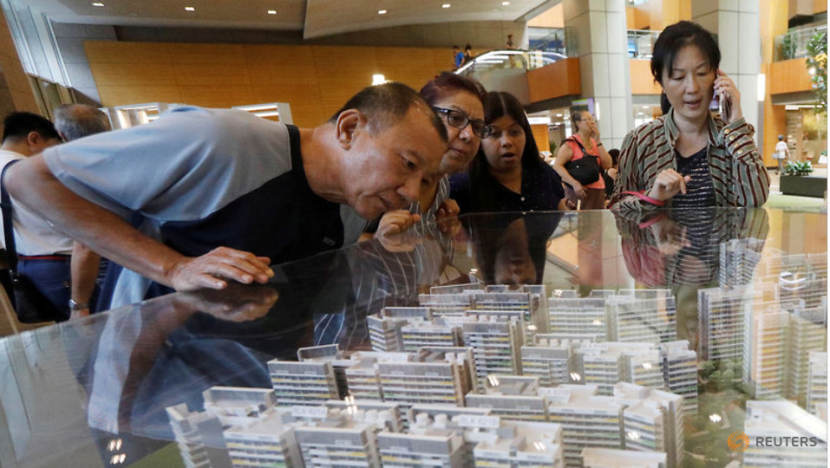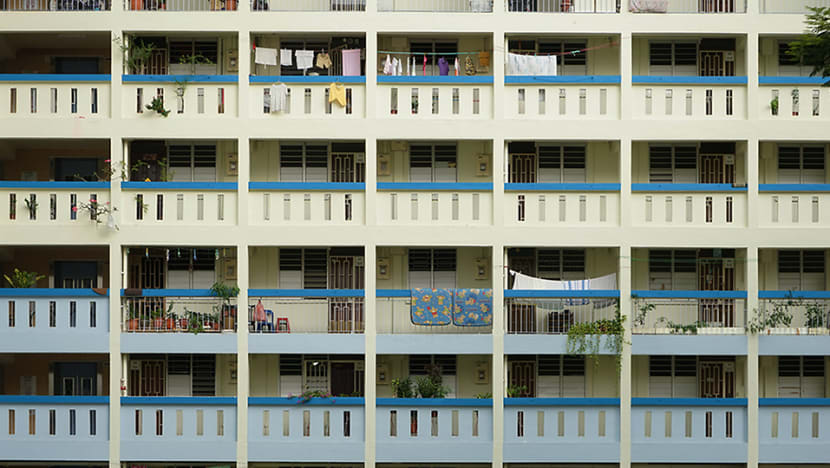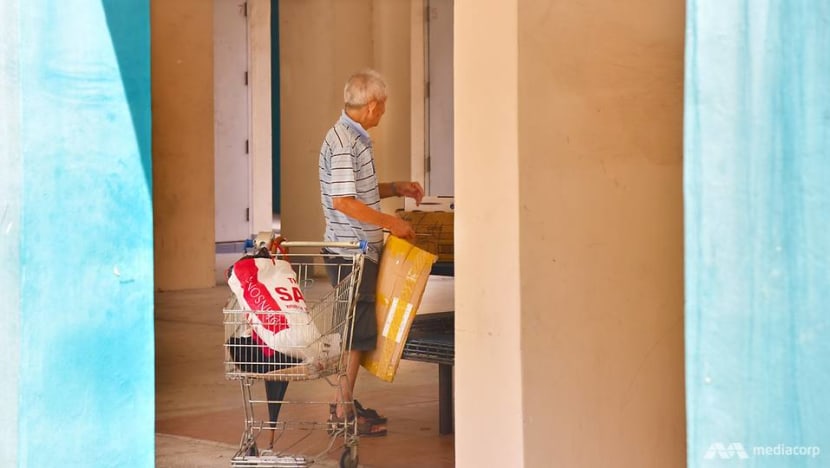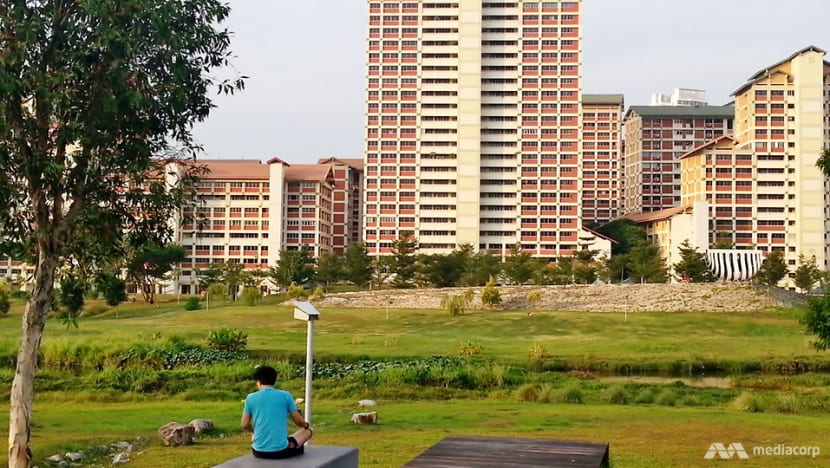commentary Commentary
Commentary: An over-emphasis on home ownership can come at a cost to society. Time for a review of public housing policy
Singapore’s housing policy started out with the aim of providing basic, comfortable and safe housing security for Singaporeans. Over the decades, strong public policy support may have led to an over-emphasis on housing ownership, leading to unintended consequences, says one observer.

File photo of HDB flats. (Photo: Hester Tan)
SINGAPORE: Singapore is frequently lauded when it comes to housing policy.
Its home ownership rate of more than 90 per cent of the population is one of the highest in the world and is much higher than the home ownership rates in developed countries.
Among developed urban centres like Seoul, Tokyo or Hong Kong, Singaporeans occupy a large per square foot per person of living space.
Our public housing programme is well known for its quality of construction and design, including complementary amenities such as community centres, playgrounds, shops, sport facilities and so on.
While in most countries, public housing is meant for low-income households, in Singapore, it provides options for nearly all socio-economic classes.

FROM THE SLUMS TO A HOME-OWNING SOCIETY
In the 1950s, most of Singapore was living in slum-like, overcrowded conditions, with poor sanitation, safety standards and construction quality. Many lived in squatter settlements of attap, wood and zinc.
Dysentery, tuberculosis, malaria and dengue thrived in these unsanitary and crowded living conditions. The fertility rate of the time was more than five children per woman versus the roughly one child per woman now, exacerbating the misery.
When the People’s Action Party came to power in 1959, it made housing a high priority. Apart from the aforementioned reasons, the Government wanted to build a home-owning society where people felt they had a stake in the country and would work hard to contribute to society.
The social stability it engendered also turned out to be a positive in attracting many multinationals to set up shop in Singapore, improving the economy of Singapore and the lives of people.
The Housing Development Board (HDB) was set up in 1960. Within 10 years, the HDB housed 35 per cent of the population, and by the 1980s, 85 per cent of the population.
Housing quality also improved over the decades and by this century, many of the newer flats look little different physically from private apartments.
OVER THE YEARS, INCREASING SUPPORT FOR SINGAPOREANS TO OWN A HOME
By the late 1980s, housing security was mostly solved with home ownership hovering at around 90 per cent of the population from 1990 till present.
Yet, policies to encourage home ownership did not let up.
From the late 1980s to mid 1990s, many policies were introduced to encourage home ownership, including the lifting of income and Central Provident Fund (CPF) restrictions for the purchase of HDB resale flats, allowing CPF savings to be used for private housing, and to pay for mortgage interest payments.

During this time, the Selective En Bloc Redevelopment Scheme was introduced, as was the HDB upgrading programme.
RETIREMENT ADEQUACY, PRESSURES ON PRICES, NEW EXPECTATIONS
Commentaries, academic papers and organisations like the OECD and the International Monetary Fund have said that the use of CPF for housing has resulted in retirement inadequacy, with excessive withdrawals for housing at the expense of CPF balances at retirement.
In response to President Halimah Yacob’s recent call for bold ideas during the recent opening of Parliament, one economist even suggested that the CPF be restricted to no longer be used to pay for housing, seeing that housing prices may not rise indefinitely.
The high support for home ownership has given rise to expectations, with the Government now unfortunately bearing responsibility for any perceived negatives in our current housing, including housing prices, and receiving little praise for any positives.
This includes recent concerns around HDB 99-year leases, where many find the idea that a HDB flat value may depreciate as it runs down the lease to be unpalatable, even though the leasehold condition is well publicised.
READ: 99-year HDB leases a chance to review home ownership and retirement policies, a commentary.
To compound issues, our population is ageing fast. By 2030, as much as one quarter of our resident population may be over 65, many of them living in larger-than-needed flats, as their children leave the nest or as their partner passes away.

If many choose to fund their retirement by monetising their houses, they may run into an oversupply of flats on the market, lowering resale prices.
Addressing the 99-year leasehold issue or the retirement security issue without a cost to the home owner would effectively need a cross subsidy from future tax payers.
Any changes to housing policy that impact prices would need to consider the fact that most voting Singaporeans have a vested interest in keeping house prices up.
The continuous subsidy of housing in Singapore has been underpinned by the Land Acquisition Act of 1966, which had used historical cost for acquiring land, managing to keep new HDB flat prices low. In 1959, the State owned 44 per cent of all land, and by the mid-2000s, it was 85 per cent.
Effectively, the Government redistributed land wealth from land owners to the rest of the population, aided by a growing economy supporting prices. This, however, cannot continue forever as housing leases start to run out, our economy slows, and our population ages.
The Government had, over the decades since independence, resisted calls to liberally expand the social safety net, in order to avoid the development of an entitlement culture – that once you give someone something, you cannot easily take it back without antagonising that person, and you may end up with an intolerable burden for future generations.
Yet, housing remains one social programme where much resources have been poured into.
OVER-CONSUMPTION OF HOUSING
You over-consume when that consumption is at the expense of something else without significantly increasing the satisfaction from that consumption.
Despite CPF contribution rates hovering between 30 to 50 per cent for most of its existence, some older Singaporeans face retirement security issues.

Many say it’s our rising cost of living, but we should also consider what happens when we take out CPF to fund housing.
A house is not just a shelter. It is also a leveraged financial asset. You are taking risk on both property prices and interest rates. Singapore’s rapid growth over the first 50 years from independence has led many people to believe that home ownership is a “sure win”, as house prices also rose from wage and population growth.
Even then, we received a sobering lesson in the late-1990s, when housing prices crashed. We have only recovered to 1996 price levels in the last several years.
A slowing economy, resistance to immigration and an ageing population suggest that housing prices may not rise as astronomically in the future.
The amount of capital that is not used for housing, can be invested in economic activities.
Pension funds in other countries invest in stock markets globally, private equity, fixed income, and other diversified investments that preserve wealth, improve retirement security, and encourage economic activity. Singaporeans score highly for assets, but it is mostly tied up in housing, insurance, CPF or bank deposits.
Home ownership means mortgages for most. Having to service a mortgage can discourage risk-taking behaviour needed in entrepreneurship, in changing careers or in finding jobs overseas.

In the economy of the past, Singapore serviced manufacturing multinationals who needed reliable labour. In the economy of the future, we need to encourage risk-taking and a more fluid, adaptable labour market.
TIME FOR A CHANGE IN HOUSING POLICY
It is wonderful that Singaporeans can take for granted their housing security. We have essentially resolved the housing security problem since the 1990s.
A major benefit of housing security was social stability, which encouraged foreign investments, mostly in manufacturing.
But do these drivers for our existing housing policy still exist today?
It is my view that we should separate housing security from asset appreciation and recognise that we may be over-consuming housing at the expense of retirement adequacy, allocation of investments into economic activity, and inculcating desirable attitudes needed for a new economy.
Housing policy needs to be reconsidered now while Singapore still has the time and the means to correct course, while catering to a class of existing home owners.
Tan Jin Meng is a postgraduate from the Lee Kuan Yew School of Public Policy with an interest in social policy and economics.














